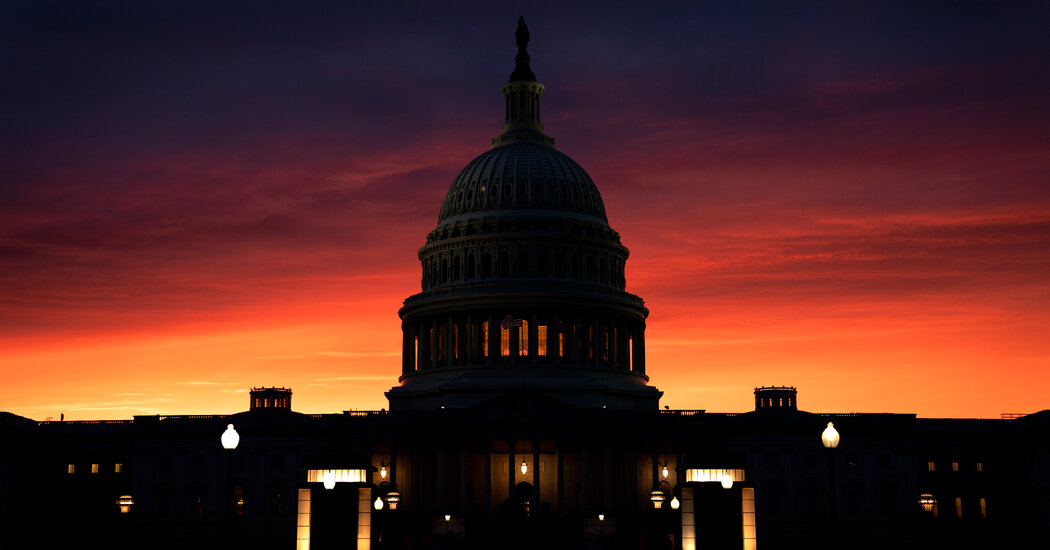
The United States could soon be living with daylight saving time year-round if the Senate has its way.
Are there drawbacks to that plan? Yes, sleep experts say. But there are drawbacks to the alternatives, too.
Here’s a breakdown of the options and what they could do to upend your daily life:
What if we had daylight saving time forever?
First, a word on the nomenclature: Standard time is observed by most of the United States in the winter months. Daylight saving time is the one we’re in after we move clocks forward every spring.
The Senate recently voted to make daylight saving time permanent, meaning there would be more sunlight in the afternoon. But without the transition into standard time in the winter, people in many northern parts of the country would be waking up to darkness at 8 a.m. or later.
“A lot of people prefer to have that daylight at the end of the day instead,” said Philip Gehrman, a professor of clinical psychology in psychiatry at the University of Pennsylvania. “But those mornings are going to get dark.”
A similar debate is playing out in Europe. In 2019, lawmakers in the European Union voted to scrap the seasonal time change and instead allow every country in the bloc to choose whether it would follow daylight saving time throughout the year or maintain standard time. But countries disagree over what time to adopt, and the pandemic has stalled those debates.
Supporters of daylight saving time, including retailers and many outdoor industries, say the extra afternoon daylight would boost sales as consumers would have more time to spend their money after work or school.
Critics, however, say it would disrupt people’s circadian rhythm, which is closely linked to sunlight, resulting in more people feeling tired and more dangerous commutes in darker mornings.
What if we never had daylight saving time at all?
That’s what the American Academy of Sleep Medicine wants: standard time throughout the year, which would mean brighter mornings and darker evenings.
“A change to permanent standard time is best aligned with human circadian biology and has the potential to produce beneficial effects for public health and safety,” they said in 2020.
Is This the End of Standard Time?
The Senate passed legislation – with almost no warning or debate – that, if approved by the House and President Biden, would make daylight saving time permanent.
Arizona and Hawaii already do this. When the rest of the country moves into daylight saving time each spring, residents in these two states are essentially out of sync with the rest of the country.
“It’s a relief to not have to think about losing or gaining that hour,” said Denise Rodriguez Esquivel, an assistant professor of psychiatry at the University of Arizona who specializes in the treatment of insomnia and circadian-rhythm disorders. She said Arizona residents were not too keen on extending blazing hot weather into the evening.
Sometimes she has to calculate what time it is for friends or family in other states. “It takes some getting used to,” she said. “But other than that, it’s just great.”
Sleep experts who advocate permanent standard time argue that it would improve sleep and alertness during the day. Circadian misalignment, they say, can result in higher risks of some serious health conditions, including obesity, metabolic disorders, cardiovascular issues, depression and even cancer.
We’ve tried this before.
In 1974, the United States experimented with keeping daylight saving time all year in an effort to reduce the nation’s energy consumption.
David Prerau, the author of “Seize the Daylight: The Curious and Contentious Story of Daylight Saving Time,” said many people quickly realized they disliked getting up, walking and driving in the cold, dark morning. The New York Times declared the winter of 1974 as “the Second Dark Age.”
“People absolutely hated it,” Mr. Prerau said. “It became very unpopular very quickly.”
The law, which was signed by President Richard Nixon, allowed for the experiment to last two years. But because of public response, the Senate and the House voted to end it a year early.
The U.S. experiment followed a similar one in Britain, which set its clocks permanently forward in 1968. Many people, especially farmers who awoke in darkness, hated it. In 1970, at a heated parliamentary debate, lawmakers expressed their constituents’ exasperation over the darker mornings. “Let us get rid of it,” said Michael Jopling, a conservative member in the House of Lords. “Cows — and other stock — hate the change,” argued John Mackie, a lawmaker sympathetic to farmers who were concerned over the decrease in milk yield.
A year later, the clocks were reverted, and the twice-yearly cycle resumed.
Then why try it again?
Perhaps the debate, obsession and even pain over the nation’s time-keeping is best captured in this scene from the HBO comedy series “Veep.”
Some expect history to repeat itself if daylight saving time is made permanent once more. But Steve P. Calandrillo, a professor of law and public policy topics at the University of Washington, including daylight saving time, said it was still worth retrying.
If the effects were a decrease in traffic fatalities and crime and an in increase in consumer spending, “then I would hope it would have a chance,” he added.
Are these the only options?
The current system is essentially a compromise. And there are alternatives that carve time changes into increments other than an hour, though none are especially great.
“I personally think that eight months of daylight saving time and four months of standard time is a very excellent compromise between the two alternatives and gives us sort of the best of both,” Mr. Prerau said.
Meeting in the middle and setting the clock back or forward 30 minutes doesn’t solve anything either, Mr. Gehrman said.
“The 30 minutes would minimize the effects,” he said. “But then are you making any real difference or does it become meaningless at that point?”
Well, we could drop time zones entirely.
Two professors at Johns Hopkins University, Steve H. Hanke, a professor of applied economics, and Richard Conn Henry, a professor of physics and astronomy, have put their names to an alternative that eliminates time zones entirely. Under the Hanke-Henry Permanent Calendar system, time around the world would be tracked under a universal standard, just as pilots currently use Coordinated Universal Time to avoid time-shifting mishaps in air.
In 2013, the writer Allison Schrager suggested in an article in The Atlantic that the continental U.S. should have just two time zones, making the east and west coasts one hour apart.
“Anyone who lives on one coast and does business with the other can imagine the uncountable benefits of living in a two-time-zone nation (excluding Alaska and Hawaii),” she wrote.
In China, the whole nation uses Beijing Time. What if the United States, where the eastern and western borders are about 400 miles closer together than China’s, did the same?
“It’s a really bad idea,” Mr. Gehrman said. “People I know in China who live further west, they just hate it.”
People on the western side of China are essentially four to five hours out of sync with the rest of the country, resulting in unpleasant waking hours, he said.
“The main point,” he said, “is we need to pick one and stick with it.”




